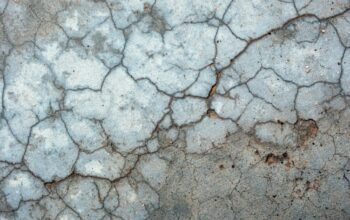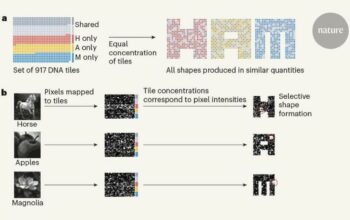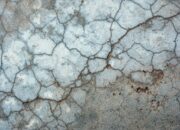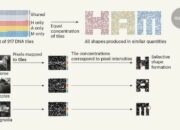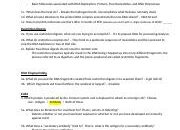In the labyrinthine world of molecular biology, DNA stands as a monumental edifice, a double helix showcasing the intricate blueprints of life. Within this mesmerizing structure lies a singular strand, an exquisite tapestry woven from nucleotides, each contributing to the symphony of genetic information. Beyond its role as a mere carrier of heredity, recent investigations have unveiled a novel perspective—an exploration into the electrical properties that lie dormant within this very molecule. The endeavor to measure conductivity along the backbone of DNA unveils a spectacular realm where biology converges with physics—a domain truncated from the canvas of traditional genetic studies.
Conductivity, as it pertains to biological substances, is an alluring topic. The very term evokes images of seamless transmission, the flow of electrons echoing through a framework akin to the pulsating arteries of life. In this context, DNA’s phosphate-sugar backbone can be envisioned as a network of conduits, allowing electrical signals to traverse with a finesse almost poetic in nature. The interplay between biophysics and bioelectronics surges forth, presenting an exhilarating narrative of how conductivity can unravel essential insights into molecular mechanisms.
The quest to elucidate the conductivity of DNA necessitates an understanding of its structural components. Each nucleotide consists of a sugar moiety, a phosphate group, and a nitrogenous base, creating a unique structural signature. This configuration not only maintains stability but also commands an intrinsic ability to facilitate charge transport. The phosphate groups, with their negatively charged oxygens, become pivotal, creating regions of high electronegativity conducive to electron transfer. Grounded in quantum mechanics, charge migration—akin to a whisper traversing the neural pathways of the brain—allows for an understanding of how signals travel along the molecule.
Yet, the inquiry does not rest solely on DNA’s backbone; rather, it expands to the interactions of these strands within diverse environments. The role of solvents, temperature, and ion concentrations emerges as critical factors influencing conductivity. For example, aqueous solutions can modulate the ionic landscape, thereby affecting the mobility of charge carriers. The introduction of metal ions such as lithium or sodium has been shown to enhance conductivity, effectively transforming DNA into a conduit of electrical impulses. It is here that the metaphor of liquid highways becomes relevant—how varying concentrations and types of ions allow for the exquisite architecture of electrical transmission.
To further grasp the implications of conductivity measurements in DNA, one must consider the implications for nanotechnology and biomedicine. As researchers probe the limits of genetic engineering, the coupling of conductive DNA strands with electronic devices marks a pioneering frontier. DNA-based nanostructures are being developed for applications in biosensors, where the molecule’s inherent ability to conduct electricity allows for rapid detection of pathogens or genetic anomalies. This integration signifies a paradigm shift—as DNA morphs from a static blueprint to an active participant in technological advancement.
The synthesis of DNA’s conductive properties and its application in nanomedicine elucidates an extraordinary narrative of intervention at the molecular level. Designing drugs that leverage the electrical characteristics of DNA can herald a new era in pharmacotherapy, where specific strands can interact with targeted cells, engage in molecular recognition, and facilitate cellular repair mechanisms. A striking metaphor arises; the conductive DNA behaves much like a conductor within an orchestra, guiding the harmonious interrelation between biology and technology.
Moreover, the implications of DNA conductivity extend into the realms of genetics and evolutionary biology. Variations in the conductive properties of DNA among different organisms can unveil evolutionary pathways and adaptations. Comparative studies reveal that certain organisms possess unique nucleotide arrangements that enable superior charge transport, thereby enhancing their resilience to environmental stressors. Here, the study of conductivity continues to unfurl the narrative of life’s evolution—a tale narrated through the intricate dance of electrons.
As the discourse around measuring conductivity on DNA’s skeleton evolves, researchers employ advanced techniques that harness cutting-edge technology. Techniques such as single-molecule conductivity measurements allow for unprecedented precision. Scanning tunneling microscopy and atomic force microscopy emerge as valuable tools, offering insights at resolutions previously relegated to fiction. These methodologies engender an understanding not only of the DNA’s intrinsic conductive capabilities but also the dynamic processes occurring at the nanoscale.
In conclusion, as we journey through the intricate connectivity of DNA, the strands do more than merely encase genetic information; they constitute a profound dialogue between electricity and biology. The measurements of conductivity serve as a metaphor for deeper understanding—a reminder that within the minute, ephemeral whispers of charge lies the potential to redefine our grasp of molecular interactions. It is this symbiosis that sustains the intrigue of studying DNA—an ancient molecule that, with each revelation, beckons us closer to the nexus of life and the fundamental forces governing it. As we dismantle the layers of complexity, it becomes evident that a single strand speaks volumes, inviting us to ponder the artistry of nature itself.


